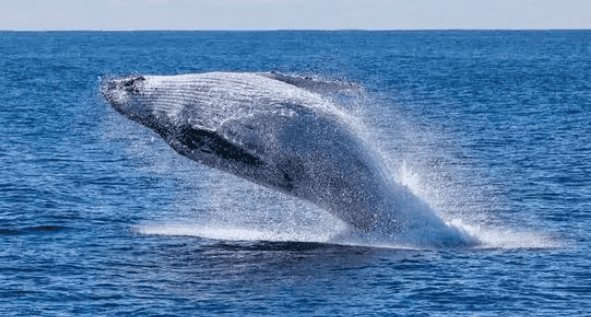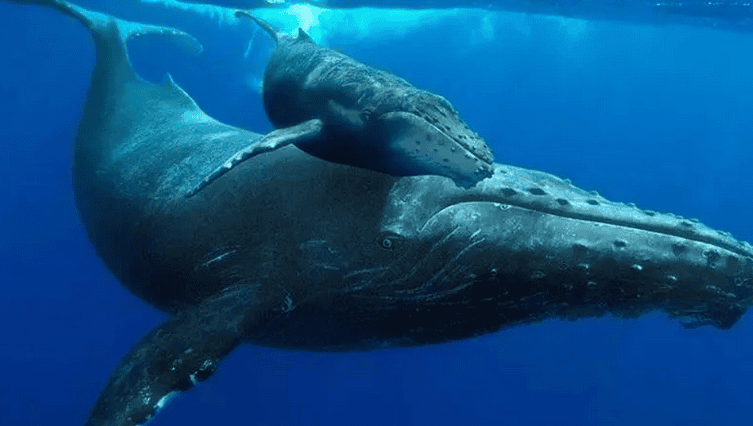Whales are the largest mammals in the ocean. They can be more than 30 meters long and weigh dozens of tons. These figures are shocking. But why can whales grow so big?

1. The evolution of whales
The origin of whales can be traced back to About 50 million years ago during the Paleocene Epoch, when they evolved alongside dolphins and sloth whales. Over time, they evolved into the giant mammals they are today. In the long process of evolution, whales have experienced multiple levels of evolution, and their morphology, skeleton, and physiological characteristics have gradually taken shape and adapted to the marine environment. Among them, the two most important evolutionary factors are competition for survival and ecological change.
1. Competition for survival
In the ocean, whales face many difficulties and dangers, including population density, competition, predatory ability, etc. Therefore, in a competitive environment for survival, large individuals are more likely to survive and reproduce because they occupy more resources, and gradually become the masters of survival. This phenomenon is an important concept in the theory of "natural selection" and plays a crucial role in the history of evolution.
2. Ecological changes
In the evolution of whales, the changing ecological environment is an important driving factor. For example, at some point in the history of ocean evolution, changes in the ocean environment may have caused whales to develop upward in size to adapt to more complex and competitive ecosystems. Therefore, it can be considered that, in summary, the evolution of whales is the interaction between individual survival competition and the external ecological environment, and is also a similar model for the evolution of many organisms.
2. Whale Ecosystem
Whales are the top predators in the ocean, and their ecological role is similar to that of top consumers of other food chains on Earth. But unlike the ecological roles of some large mammals, whales do not make a living by hunting other sea creatures. Whales are observers of ocean currents and ocean plankton, which is one of the key reasons for their increasing size.
1. Plankton
The main food that whales rely on is plankton, including phytoplankton and zooplankton, most of which are phytoplankton. These plankton are carbohydrates fixed by ocean photosynthesis, and whales convert these nutrients through the food chain into fat and protein that their bodies need. However, whales have to roam the ocean for a long time to find enough plankton, which requires them to be large enough and persist in the ocean, which is one of the reasons why their body size gradually increases.
2. Marine environment
Whales are cold-blooded animals. As their bodies get larger, more heat accumulates on their body surfaces, and they need to consume more energy to maintain their own life activities. This means they need more food to maintain energy balance. But the plankton that large whales rely on usually only exists in certain nutrient-rich areas of the ocean, so if they need to spread out across multiple ocean environments in search of food, they need to be larger. Therefore, larger whales mean better adaptation to a wider range of marine ecosystems.
3. Physiological characteristics of whales
In addition to evolution and ecological environment, the physiological characteristics of whales also played a key role in their growth into the giant animals they are today.
1. Large Heart
The heart of a whale is the largest of all mammals. They need to be able to deliver large amounts of oxygen to all parts of the body to continuously support the operation of their huge muscles. This type of heart requires a lot of force to push the blood forward. For example, the heart of a blue whale weighs an astonishing 1,000 pounds, which is more than 30 times that of a human heart.
2. Respiratory system of whales
All whales have an organ similar to a lung, but it looks more like an air sac. When they dive underwater, this organ stores air in the lungs and forces oxygen uptake into the lungs and into the body. The size of this organ is directly proportional to the whale's volume, because whales need more oxygen to maintain normal breathing and movement.
3. Metabolism of whales
Whales are large and need to consume a large amount of food every day. However, their metabolism is slower than other animals of the same size. This is because whales need to store large amounts of fat to provide their bodies with energy and nutrients during seasons when food is scarce. Whales have slower metabolisms, allowing them to survive longer in the ocean without eating.

4. The position of whales in the food chain
Whales are the ocean The apex predator among animals, but not the top of the food chain. At the top of the food chain are small organisms that combine photosynthesis and chemistry, called plankton. Tiny algae and zooplankton called plankton are at the top of the entire ocean food chain, interacting and delivering organic matter through the food web. The energy of these creatures comes from the sun, so they are also regarded as the storage of solar energy in the ocean. Large whales are consumers higher up the food chain. They input more organic matter and energy into the food chain by feeding on advanced zooplankton such as barrel jellyfish or small fish.
The body shape characteristics of whales are usually related to their living environment, and are also one of the important factors driving the ecological development of whales through natural selection. During the long evolution, whales have continued to grow in size and adapted to a more complex and competitive marine ecological environment. Their position in the food chain and the amount of plankton they ingest are also important factors in their growing size.

 扫一扫微信交流
扫一扫微信交流
发布评论